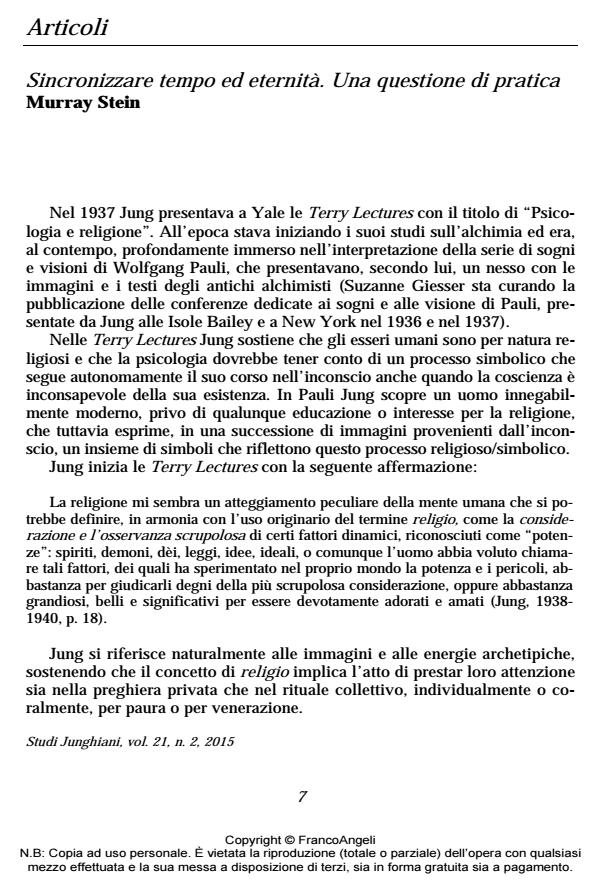Synchronizing Time and Eternity. A Matter of Practice
Journal title STUDI JUNGHIANI
Author/s Murray Stein
Publishing Year 2016 Issue 2015/42
Language Italian Pages 17 P. 7-23 File size 112 KB
DOI 10.3280/JUN2015-042002
DOI is like a bar code for intellectual property: to have more infomation
click here
Below, you can see the article first page
If you want to buy this article in PDF format, you can do it, following the instructions to buy download credits

FrancoAngeli is member of Publishers International Linking Association, Inc (PILA), a not-for-profit association which run the CrossRef service enabling links to and from online scholarly content.
In this paper the Author attempts to show how Jung conceived of the interface of time and eternity in the self. To do this, he uses Jung’s commentary of Wolfgang Pauli’s "world clock" vision, and to that he adds his commentary on Pauli’s active imagination, dedicated to M.-L. von Franz, titled The Piano Lesson. The article is a meditation on the nature of time, of eternity, and of their psychological interaction in the process of individuation. This has relevance to clinical work as well.
Keywords: Time, Eternity, Wolfgang Pauli, Synchronicity, Compensation
Murray Stein, Sincronizzare tempo ed eternità. Una questione di pratica in "STUDI JUNGHIANI" 42/2015, pp 7-23, DOI: 10.3280/JUN2015-042002